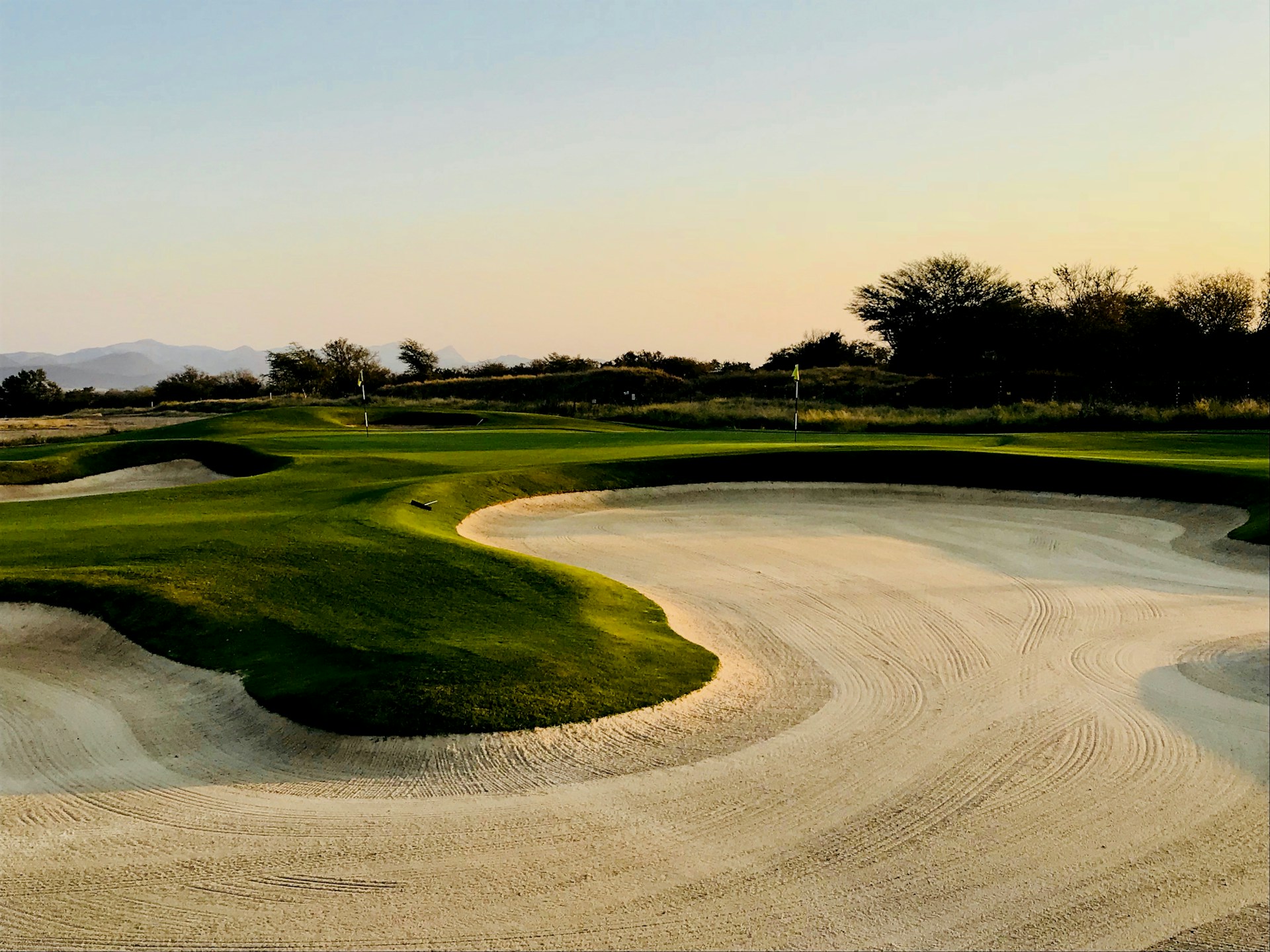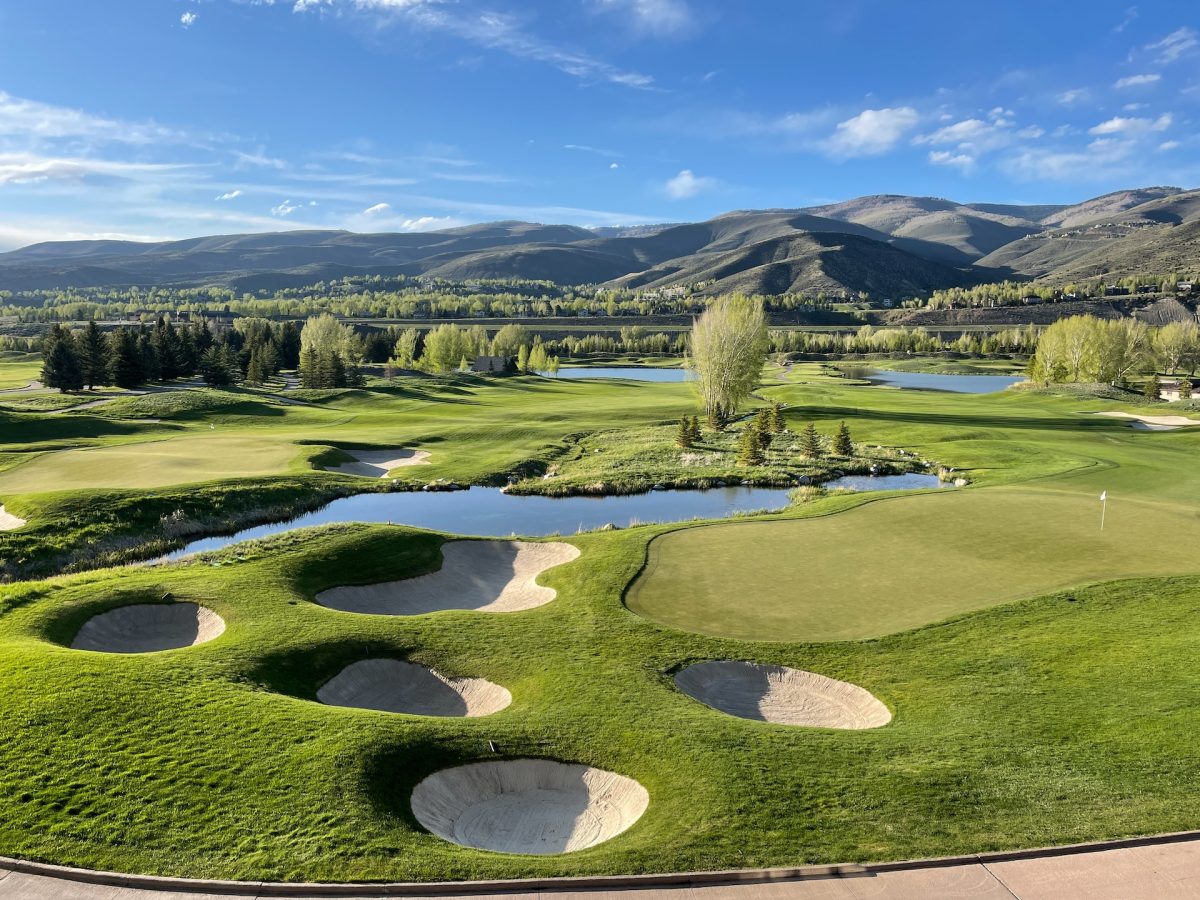Have you ever looked around your favorite golf course and wondered what it took for those magical 18 holes to be the calming oasis you love? Or think you could do better than your local green and build a golf course that won’t make you want to throw your driver into the trees? Either way, how much does it cost to build a golf course? The answer isn’t a one-swing-fits-all kind of deal. Here’s how to break down if building a golf course is something you want to putt around with.
The golf course building details

What to think about first
Before starting a budget for anything, you have to know the details. If you want to update your bathroom, you don’t need to do a demo first, then buy the new toilet, and then measure the space.
- How many holes is the course?
- What par is the course?
- How many acres will the course be?
- How many hazards will you have, and how will you use the land?
Things that will affect the price
A big part of why the price is vague and wide is all of the moving factors. Where you live and where the course will be changes the price of many things. Some costs can only be determined when you know the size of the course. Other costs depend on how many of something you want for the course. You have to price so many things out first before you know the actual cost of building a golf course.
Golf course cost estimate
Do you want to build an executive course? Are you looking to turn your backyard into a 3-hole baby course? What is the goal? What kind of course are you shooting for?
The oversimplified answer is it is possible to build a small-scale course for around $500,000, an adorably tiny course in your yard for a few hundred dollars, or a decently professional course for around $6 million. Ask yourself what you want to test your irons on and go from there.
The start of the budget

Costs before you even touch the land
Before you set foot on the land to do anything, you’ll start a golf course tab. The pre-planning and planning stages aren’t free.
- Permits like zoning approvals and environmental impact approvals
- Landscaper, architect, and groundskeeper
- Realtor
Unless you have driven by the perfect location for the golf course, you might have a realtor help you find the land where rounds will be played. Once the spot is found, an architect and a landscaper will show you where those hazards should go and how the holes should flow.
Don’t forget about the paperwork. Permits and approvals are needed at various points, and you’ll need to make sure all documents are in order.
The costs of the green
- The actual land
- Getting the land ready by doing drainage installation, landscaping, and earthmoving
You can’t tee up without having land to play on. Depending on the size of your course, you’ll need quite a bit of space. In the U.S., an acre of land runs around $12,000, so do the math for how many acres your golf course will be. With the average professional golf course around 150 acres, it would run $1.8 million for the land.
The landscaping could be as expensive as it is extensive, and the number can only be factored in by you and the landscaper. But when it comes to an irrigation system, the average cost is $500,000 to around $1,000,000.
The budget nitty-gritty

The fun staples
Once you have the land purchased and prepped for the course layout to come to life, you can begin construction for the course to be gorgeous.
- Practice greens
- Driving range
- Hazards like bunkers
- Golf carts
- Clubhouse
Practice greens start at $50,000 and can go up to $100,000, with a driving range coming in at $250,000 on the low end, with the high end a possible million or more. One of the best parts of playing a round of golf is feeling really cool driving the cart around, but those cost at least $10,000 a pop.
Depending on the size of the clubhouse and what else you have on-site, you’re looking at a minimum of $300 per square foot of space, with $700 per square foot at the top.
Don’t forget the maintenance fees

Never underestimate what you’ll need to spend for the annual attention to the green. Unless you want to play on an apocalyptic zombie field in a year or two, factor in maintenance fees, these could range between $500,000 to a million for a private course.
Basic upkeep costs
- Normal lawn care
- Treatments for green areas
- Equipment for the grounds
Lawn care is no joke. If you have land yourself, you know how much mowing and maintaining it can sometimes just plain suck. But it has to be done. Mulch, fertilizer, bug prevention, and pesticides are regular, repeating purchases. Between mowing, watering the green areas, and landscaping the surrounding land, monthly ongoing costs add up. To take care of the lawn, you need machines like tractors, mowers, and other equipment.
It seems like a neverending list of expenses to not get an exact price, but it’s along the same lines as remodeling a house or purchasing a house. You don’t really know until you are in it.
Whether you want to get investors and build the golf course of your dreams or want to see if a mini course would fit in your backyard, how much it costs to build a golf course is a neat bit of information to have. And it’s always good to know what you would spend the money on if you won the lottery.




